Tuesday morning started out just like any other day. I went into the kitchen first thing, grabbed a coffee filter, added some of a my favorite Brazilian grounds, poured the water and pushed the red button. The button illuminated so I walked away to straighten up the kitchen then start up the computer.
A few minutes later I thought, “Hmmm, I don’t hear anything. More importantly I don’t smell anything.” I have a very inexpensive model of coffee maker I bought here and usually within seconds of pushing the “on” button the water starts to gurgle and a little steam is emitted from the top.
Still positive I went over and felt the machine. Cold. I checked inside and out for some sign of proper function, and started it again. Nothing. My calm, positive attitude slowly evolved into a bit of frantic thinking, and rattling and shaking the machine ensued.
Alas, the machine won. Less than two years old and it has bit the dust.
What to do, what to do. One option included buying a new maker for my last two months in Brazil. A possibility, but it seemed a bit wasteful. I could try to sell it upon moving or just leave it. The quality of small kitchen appliances here isn’t something you would want to ship home, trust me.
Sadly, investing the money in purchasing coffee every morning isn’t even an option here. There was no to-go coffee within the city until the McDonald’s started serving breakfast and selling it last October. I’ve had it a couple times and it is tasty and inexpensive, but it seriously takes a half hour to get the order here with your only bonus being it comes in a to-go. (That has been quite a big bonus, though, on some occasions.)
Then I started thinking. Well…I do have one more option which would eliminate the need for me to buy a machine or support the golden arches.
Meet my morning coffee maker.
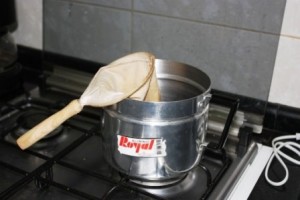
Several months after living here I learned about the so-called “artisanal” way of making coffee. There are several cafes around our city that still make it this way for the public. I enjoy going there and watching the women behind the counter serve it to the men there for a quick cup in the morning while standing. Once my interest was peaked I bought the supplies and made it a few times for myself.
It wasn’t until we met with some new friends in Curitiba, that I learned that this style of making coffee is considered old school and artisanal. Apparently it is a lost art in many larger cities in southern Brazil. For comparison Curitiba is a city of almost 2M and Maringá has about 300K. Not so small in the US, but small by Brazilian standards when you compare it to cities such as Sao Paulo with 18 to 19M the last time I checked.
The process is simple. You toss the coffee, which is ground very finely here, into a pot with water. I use about 2 scoops of coffee for 2 ½ cups of water. You throw in the sugar at this point too. For me, that is a rounded teaspoon. Then you boil. Not a hard long boil, but enough to get it hot and dissolve the sugar and some grounds.
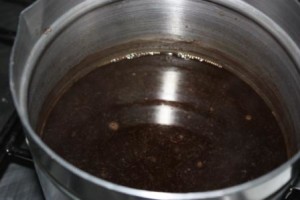
Next comes the filter that looks like a mini-fishnet. Made of cloth, the coffee drains through it like a filter so your grains don’t go to the cup. You pour the coffee through the filter and allow it to drip directly into the cup.
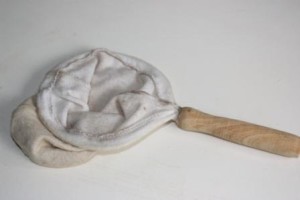
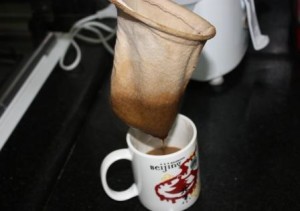
The process isn’t much unlike a mechanical coffee maker except for the fact that the coffee is cooked directly in the water. The water isn’t simply flowing through the coffee and into a pot. Although you do have to be present throughout the whole process.
It is also similar to what we call cowboy coffee or campfire coffee back home. Well, except for the fact that I’m using delicious Brazilian coffee beans. I would imagine it is tastier than most made at campsites. The brewing process results in a much stronger brew. I enjoy it, but I always have it café com leite-style with milk.
The negatives are the clean up. I have to dump out all those grains, scrub the pot, clean the filter contraption well and allow it to dry after I make coffee each morning. I’m starting to get used to it though. I guess in this case I looked at going without the maker as a challenge. Why not enjoy the piece of culture I have for the time being? Even if it does mean an extra 10 minutes of cleanup in the morning.

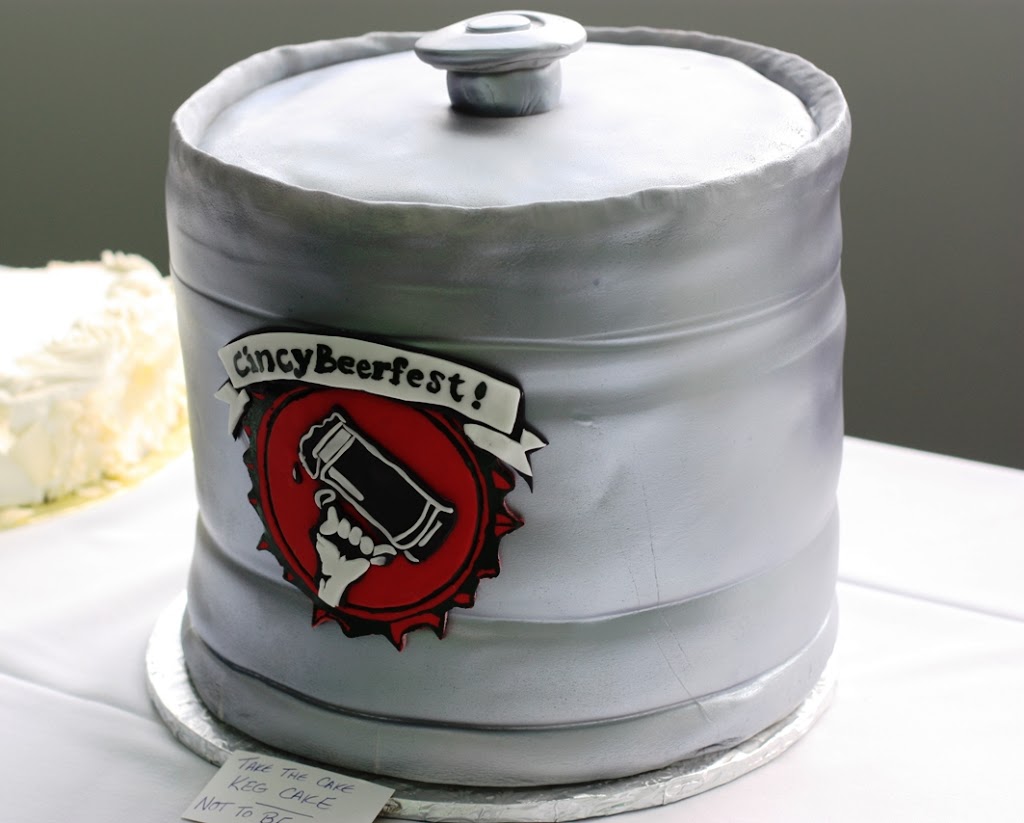
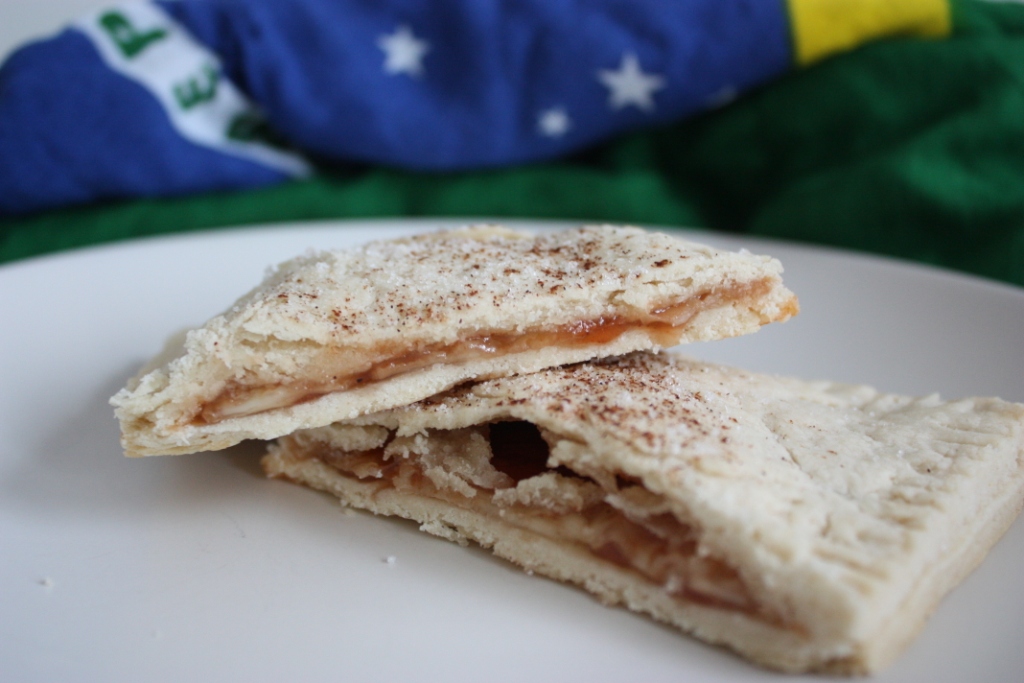
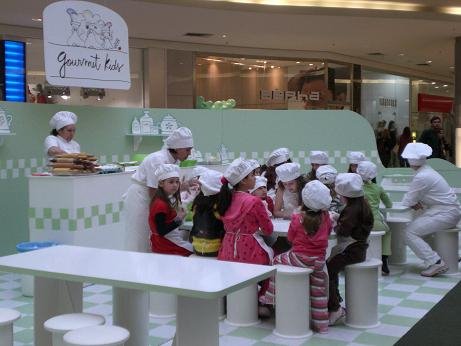


WOW! Okay, it sounds like a lot of work (and cleaning up after coffee grounds is the worst), but it’s still really awesome. There’s something very natural about it…
this is so cool they go this in Costa Rica, i agree no point in getting a machine if you are leaving and you are learning a new skill this way!
That is the way we make coffee every day here! And Mate as well! And in other households I’ve visited it’s the same way. I guess it’s because we are in a small town? And it’s a lot cheaper 😉 haha
Any amount of work is worth it for coffee 😉
I thought you were going to say you’d switched to tea!! ha. well, this looks a lot more interesting than a drop coffeemaker. Enjoy your last month 🙂
Oh, I must needs have coffee in the a.m. or else I don’t function very well, so I greatly appreciate your need to come up with a solution to your dilemma. I think you did that very nicely in this case!
Glad you found a way to have your coffee, that’s really interesting! I agree, it sounds worth the extra time : ) Brazilian coffee sounds delicious.
We do pretty much the same, except with paper filters. When making smaller quantities, I use my percolator, something like this:
http://fantes.com/images/9993espresso_stovetop.jpg
Consider getting yourself one. It makes coffee making easier, cleanup is easier and it’s worth taking home with you. The coffee is lovely and rich too. Just make sure you pack the coffee in.
I never bought an electric coffee maker. The quantities those make are pathetic. We like a lot of coffee 🙂
The only place you’ll find someone making coffee here using the pots and bags is in the more average homes. Definitely not in coffee shops or cafés.
Jenn – Yeah, it does have that natural appeal.
Chow and Chatter – Definitely a new skill. I have my beautiful Cuisinart left at home. Ha, ha! I’ll have to take this equipment back with me so I can still make it like this sometimes.
Stephanie – I figured it was probably common in smaller towns in other parts of the country. Haven’t had mate yet, but have a friend that has been on my case to try it. 🙂
Erica – Apparently I agree with that bc I wasn’t willing to give it up all together. Ha!
Michelle – Ha, ha! I do drink a lot of tea too, but I enjoy coffee too much (and don’t have any adverse effects) to where I’d give it up.
Daily Spud – Yes, it was something I couldn’t just forget about. I enjoy it way to much in the morning.
lesley – I do think Brazilian coffee is unique. Mostly it’s strength and the way the beans are ground.
Tint – Thanks for the tip. I’ve seen those percolator. Most of the more upscale coffee shops here have switched to the big espresso machines, but there are several very simple ones that have been around for a while still do it this way. I hope Maringa hangs on to that tradition and culture. I might also mention that it is interesting to observe the types of people at both places. Definitely a socioeconomical gap.
So funny you mention the size of the pot. We ordered a 12 cup coffee maker online so we’d have extra when we have guests. It came and it was the same size as a 2 to 4 cup coffee maker in the US. Ha! Apparently it was 12 cafezinhos!
Love the new coffee maker 🙂
Our coffee maker bit the dust too, hhmm, seems like there is a 2 year shelf life, I’ve gone back to French press, and wonder why I ever left, much better. I’ll have to give your method a shot.
Wow! Atleast you have a Bodum Coffee Press waiting for you at home…I should of sent it to you in Brazil…LOL
It does seem a little similar to making coffee in a press pot like we do though we don’t add the sugar
She-Fit – Thanks for stopping by. It is working out well.
OysterCulture – I have never used a French Press, but won one from Miranda’s blog. I can’t wait to try it. It is waiting for me in the States.
Miranda – I thought the same thing! Ha! What timing. I’m really looking forward to trying out my prize and will be sure to do some posts about it.
kat – Yeah, I think it’s very similar. It’s been working out pretty well. Probably has a lot of the same flavor as a press pot.
I can so relate to your reaction when your machine conked out – cursing and slapping at it didn’t bring it back to life for some reason!
Good for you that you adopted the local custom! My husband started roasting coffee beans at home after seeing them do it at an Ethiopian restaurant. A good reminder that people have been enjoying coffee long before grinders and automatic coffee machines! Thanks for the tutorial – I wonder if I can find that ‘net’? It would be cool to try it (maybe I can make one, if only I could feel the fabric). Okay, I’m rambling . . . I’m only on my first cup!